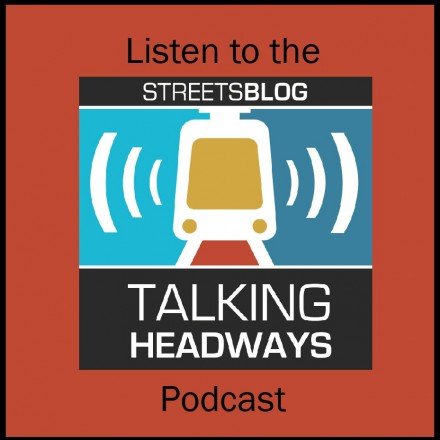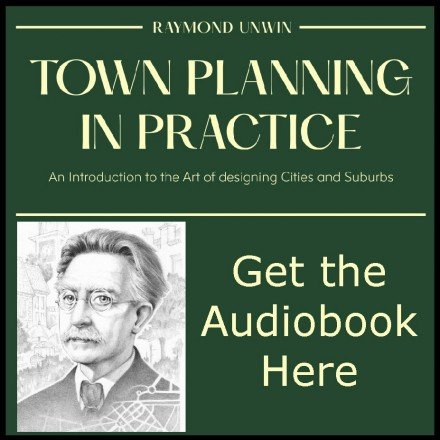(Unedited) Podcast Transcript 310: Transportation and Law Part 1
Here’s a full unedited transcript for Episode 310. It will be edited and updated in the next few weeks.
Jeff Wood (59s):
So recently Iowa a professor at Greg Shill and his team put together a Symposium that brings together scholars and lawyers to think about Transportation. I’m going to take some of these panels and cut them down nor to, to share them with you all. In this episode Jonathan Levine of the Taubman College of Architecture and Urban Planning at the University of Michigan discusses his paper. Transportation Policy Entrenchment Institutional Barriers to Accessibility Based Planning and Audrey McFarlane Associate Dean of Faculty Research and Development at the University of Baltimore School of Law discusses her paper Black Mobility and the Refusal of Funds Structural Racism and Mass Transportation Decision Making which she wrote with Dean Julius Isaacson also of the University of Baltimore School of Law and finally Sara Bronin Thomas F Gallivan Chair in Real Property Law and Faculty Director Center for Energy and Environmental Law University of Connecticut School of Law discusses The Failed Federalism of Street and Vehicle Design Standards we hope you enjoy this episode and we’ll be back with a few more through the end of the year Thanks to Greg Shill and the Iowa College of Law for allowing us to rebroadcast the audio.
Jeff Wood (2m 2s):
All right. Greg take it away.
Greg Shill (2m 4s):
Well, thanks to everybody I’m I’m so glad to be, to be opening this event today, and then so delighted that we are, we’ve currently been joined by over a a hundred people, and we’ve, we’re expecting a good turnout today. We’re very excited to have all of you here and to hear it from our panelists and keynotes. And so as a faculty organizer and host just my great pleasure to welcome you to that is supposedly on The Future of Law and Transportation a lot of Thanks have already been extended, but I wanted to extend those. So I want to thank Dean Washburn once again, for his set fast and continuing support.
Greg Shill (2m 44s):
I want to thank Jason wrench, Hannan as headed the IBL Center for his a absolutely critical support. The students of the Iowa of our Review Hayley. It was the Symposium monitor and Dana Waterman, who was the editor in chief, as well as their staff who be working on the articles that come out to the Symposium for the months to come Sara Clark, a Diane to a wall. Corey hates Laurie, Laura, Kim plugin, and just a young, many others I’m in the Iowa of Law college of law. That building has been working tirelessly doing this for several months. It including making the transition from an in-person events.
Greg Shill (3m 24s):
And we had all sorts of plans for that to the transition. And so what will hopefully be as the Dean alluded to it an event or reaches more people ’cause because if it’s a zoom format, I also want to add thanks to Chad Crow, who is the person behind the, the arch that was commissioned for the program. And you’ve probably seen it on the website and on the program, but there’s a, a little image of it. I also want to thank Robin How Kerr who made the Symposium graphics such as the zoom background behind Jason right now that you’ll be seeing periodically today. It’s often said that the modern civil rights movement began 65 years ago next month on a city bus in Montgomery, Alabama, when Rosa parks refused in order from a bus driver to give up her seat for a white man, the Montgomery bus boycott to follow, to help power or historic successful movements for civil rights and social change movement that continues to this day.
Greg Shill (4m 31s):
But in the past 65 years, there’s been a major change in how people get around 60% of transit riders today are people of color, not coincidentally, outside of a handful of cities in the United States. Public transit has become a bare bones, safety net service, rather than a system like roads and highways that are taken seriously and receive extensive funding and bipartisan support support that it needs to function as an effective Network treatment of sidewalks and other active transportation infrastructure is even worse.
Greg Shill (5m 12s):
As Dean Washburn mentioned, many of these decisions are made at the federal level. Others are made at a state and local level, but in fuse through all of them is Law. This is the first scholarly conference that we’re aware of. And we looked that focuses on lawn Transportation as a subject of general public concern by that, I mean, today’s speakers, we’ll be talking about hard social questions that relate to Law Transportation I’m not saying you won’t hear some of the shiny new technology that has come across your social media come up at all today, but it’s not going to be the focus.
Greg Shill (5m 52s):
I think you’ll find these hard social questions to be the focus today and ways to think about addressing them. Mmm. That hopefully starts the conversation that continues long paths this conference, in addition to hopefully being a path breaking conference in itself. The other thing we want to do today is to jump start a dialogue, legal scholars, comments on everything. You throw a dart at a newspaper, and you will find a law professor offering an interpretation or an opinion on a major topic of public concern, by the way, whether they are an expert on it or not really topics ranging from the internet to policing, to taxes, interest rates, foreign policy, housing, racial equity, gender equity, healthcare, and of course, anything having to do with constitutional law or litigation.
Greg Shill (6m 46s):
One of the really glaring exception is Transportation. And I find that a little puzzling for a number of reasons. Transportation is a very prominent in society and public policy, as well as everyday life Transportation is the connection between so many of the questions of our time and scholars in other disciplines, and to be clear, some scholars in a legal academia, including many of those present today, but, but overall, we have been outstripped by our peers and other disciplines where they’ve really been doing a credible work on the connection between Transportation and climate change with Transportation now contributing the, the biggest share of us greenhouse gases, that connection between Transportation and structural racism between transportation and economic growth, public health, and of course, urban planning.
Greg Shill (7m 43s):
And it really disciplines across the board from engineering to political science, economics, geography, sociology, even anthropology and Urban, and Transportation Planning have been laser focused on this for decades. We had fallen behind it as a community of legal scholars, even as lawyers, themselves to remain integral to the planning, implementation, and politics of Transportation. So we are excited today to be holding this convening this event, but I think we will only succeed if we, if we turn it into a bridge that helps bring legal scholarship towards the, the hard work that folks and other fields have done.
Greg Shill (8m 25s):
And it also, hopefully there’ll be some benefits for folks and other fields to see how legal scholars approach to these questions. As I mentioned next year, that I will argue we will be publishing a special issue based on the articles presented today. Okay. This is on transportation planning and land use is our first of two such panels. We have Jonathan Levine who was a professor of urban and regional planning at the university of Michigan Tubman college of architecture and urban planning. He is followed by Audrey McFarlane Associate Dean of Faculty Research and Development And Dean Julius Isaacson professor of law at the university of Baltimore school of law.
Greg Shill (9m 8s):
And Sara Bronin who was the Thomas F Gallivan Chair in Real Property Law and Faculty Director of the Center for Energy and Environmental Law at the university of Connecticut school of law. And she’s also been very closely involved in our land reform efforts in Connecticut and new Haven. And so without further ado, Jonathan Levine
Jonathan Levine (9m 27s):
I would like to take you forward to an ordinary day in the post pandemic era, ordinary day, and the post pandemic era. You’ve got a tasks you’ve got to do today. You have to get to work and back, maybe it is a school may be drop off kids. Maybe you want to go to a restaurant. So you have a list of things you’re hoping to do today. Only the only thing that’s not ordinary about this day is you got two different cities in which you can choose to fill your task list. City. Number one, on our left-hand side is, has destinations that are close to their origins, origins and destinations close together, but it has slow traffic city.
Jonathan Levine (10m 14s):
Number two has origins and destinations that are spread farther apart, but the traffic is fast and I’ll add one more assumption in city. Number one, because of the closeness of the origins of the destinations, you can feel your task list with a smaller investment of time and money than a destination. Number two. So now the philosophical question is which city has the better transportation system. And most of you, I’m not going to conduct a poll here, but I suspect most of you would say, well, I’d rather spend less time and money in transportation. If I can reach the same number of destinations, therefore close destinations with slow traffic is a better transportation system, even a B, because I can end up filling my list with less investment of time and money.
Jonathan Levine (11m 10s):
If you think that your thinking in Accessibility terms about Transportation, as opposed to Mobility terms about transportation, and I’m going to argue that embedded in our institutions and an embedded in all of our ideas about Institutional forms are implicit problem definitions of a regarding Transportation historically our problem definitions have been Mobility based, but the Mobility based problem definitions are inconsistent with a very purpose of Transportation, which is to reach destinations, not to move per se, a quick definition, the distinction between the Mobility and Accessibility.
Jonathan Levine (11m 52s):
I like to talk about them in terms, what would constitute an improvement in each So an improvement in Mobility as an increase in the territory that one can reach for a given investment of time and money, whereas an increase in Accessibility as an increase in the value of the destinations that one can reach for a given investment of time and money. If we start from the first friend of mental purposes, the purpose of Transportation in almost all cases is reaching destinations. Then we would have to conclude that Accessibility is the Def problem definition. That’s consistent with human behavior and human motivations.
Jonathan Levine (12m 31s):
Problem definitions are carried in people’s hearts and minds, and there are also carried in our legal institutions. So this talk argues for what I’m going to call the accessibility shift, which is the, a shift in the methods and modes of transportation planning from a Mobility basis to an Accessibility basis. Now often Accessibility is equated with walking, cycling, transit, basically the alternatives to the automobile, and Mobility as associated with the automobile. That is not the definition that I’m working from. I would argue that there is a Mobility and an accessibility approach to planning for any Transportation mode.
Jonathan Levine (13m 17s):
For example, embodied in the standard engineering manuals is an, is a mobility approach to planning for a pedestrianism. The quality of pedestrian, as it is gathered is garnered by the ability of the pedestrian to move, rather than the ability of the pedestrian to walk to any destination they might want to walk to. So let’s not, let’s not apriori decide that Accessibility is associated with any of those particular mode. In addition to being embodied in the hearts and minds of citizens, of professionals, of decision-makers Mobility problem definitions are embodied in methods and metrics in transportation, planning, transportation, engineering, these methods and metrics are used to guide.
Jonathan Levine (14m 9s):
Decision-making such that it’s not enough to change hearts and minds ’cause the individual planner or the individual policy maker, or the individual decision maker would be very hard pressed to alter their practices when institutions require them to act in a Mobility centric fashion premier tool in, in Mobility based planning is a level of service, which is roughly the degree of freedom of movement of any particular mode. But the level of service historically has tend to have tended to emphasize the movement of cars, auto Mobility.
Jonathan Levine (14m 50s):
And this idea of level of service comes up in a number of different ways in our institutions. For example, we have municipal a level of service standards in our planning, planning documents at municipal ordinances. I’ll give you a little quote from, from my various institutions here under no circumstances, show the development because of drop below a level of service, E a N Z a volume to capacity ratio of a greater than 1.0 at any signalized intersections for any analysis scenario of a city, the city of Lakewood. Okay. So here is a rigidly defined Mobility Based problem definition that any individual planner, any individual engineer would be hard-pressed to change autonomously.
Jonathan Levine (15m 46s):
The change would, of course it would require a legislative change. In this case, it’s not just at the, at the municipal level. It’s also at the state level S here’s a, a, an example of a state of Oregon is actually one of our more progressive States when it comes to transportation, I’ll read the quote and then I’ll, then I’ll give you the context. The following the volume volume to capacity ratio based methodology is recommended as a first option when developing alternative alternative Mobility targets for state highways. So here’s the state of Oregon telling a municipal entities, and it’s in the state of Oregon.
Jonathan Levine (16m 26s):
Listen, you have to, you have to adhere to our Mobility targets. If you can’t adhere to our Mobility targets, we’re going to give you a methodology that is going to allow you to generate new Mobility targets, but the thinking remains stuck in Mobility. So basically the S the state, this state of Oregon is saying to the municipal and County governments, OK, we understand you can’t all have free flowing traffic, so you might need to drop your Mobility Standards. But in fact, the urban areas, which are the one’s that have the quote unquote Mobility problems are the highest accessibility areas in this state.
Jonathan Levine (17m 9s):
So instead of merely dropping your Mobility, Standards the, if the thinking could change to a developing Accessibility based standards, in which case you’re not merely lower your standards, but actually increasing people’s opportunities or to reach destinations. A third, a third example comes in the form of concurrent concurrency, which is often a state level institution or adequate public facilities ordinances, which is often a local municipal institution. Read you an example from Charles County, Maryland, no preliminary plan for a subdivision, a major site plan required for a zoning permit shall be approved unless the planning commission first determines that the proposed subdivision or development will not adversely affect the adequacy of public facilities serve in the area project or a development so far so good, because by the way, this applies not just to Transportation, but to things like sewage, you can’t build of Development.
Jonathan Levine (18m 11s):
If it’s going to flood the area, who’s, who’s going to object to that, and nobody’s pro flooding, but when it comes to transportation, let’s see what it means. Service levels shall at all intersections in the immediate vicinity of the project, as designated by the zoning officer will be defined by the current edition of the highway capacity manual, published by the transportation research board. In other words, define your Mobility standard and don’t develop, unless you can maintain that Mobility standard that ultimately becomes a binding constraint on Development, which forces development into a more remote, more low density, more auto entity, auto oriented areas. In other words, it, it becomes a constraint for allowing more people to live, work, and play in high Accessibility areas, which is exactly the opposite of what one would do.
Jonathan Levine (18m 60s):
If one were pursuing a, an accessibility, Based a problem definition, and Planning a notable effort to, to reform has been evident. And the state of California in the last few years, this is in the reform of the California environmental quality act, which previously defined congestion as an environmental impact, per se, that had a number of negative, very negative consequences. A lot of very pro Environmental Transportation reforms were attacked under the sequence of California environmental quality or quality act formula because they threatened to create automotive congestion. This reform says, actually, no, we’re not going to treat congestion as a, as an environmental problem, per se, it’s a vehicle miles traveled.
Jonathan Levine (19m 47s):
That’s going to be our metric of environmental harm. So I’ll read the language in developing criteria. The office show recommend potential metrics to measure a Transportation impact that may include, but are not limited to vehicle miles traveled. Vehicle miles traveled per capita, et cetera. I would call this a step forward and it’s, it’s a necessary element in transportation policy reform. But I want to emphasize that the purpose of Transportation the purpose of transportation planning is not Mobility, but it’s also not reducing vehicle miles traveled. Just to give you one way of thinking about this. I want you to imagine a plan are choosing to different alignments for a transit investment.
Jonathan Levine (20m 29s):
One goes through a rich area. One goes through a poor area. If that planners criteria is reducing vehicle miles traveled, the answer is clear, put your transit investment through their rich area. There are the ones who have a lot of cars. They are the ones who would drive a lot. In other words, a problem definition, exclusively around vehicle miles traveled tends to privilege travel. That’s high vehicle miles traveled to begin with and assumes that if you’re not driving a lot, which poor people don’t because they can’t afford to, there is no transportation problem. So a vehicle miles traveled definition is a step forward from a mobility definition, but it can never be adequate as a team, as a definition of the transportation problem.
Jonathan Levine (21m 16s):
Finally, just, just to wrap up, I, I like to talk about three routes of reform the bottom up the top-down and the outside in the bottom up is that individual plan or a decision-maker taking decisions to work in an Accessibility based fashion. But as we’ve seen that person is going to be very, very limited because of the institution’s demand have him or her ex Mobility based analysis. So for that reason reform of institutions, reform of funding practices is necessary. The outside in route of reform is when we look at other fields such as real estate or other fields, such as a public health, these are fields that are very, very interested in the capacity of people to reach their destination.
Jonathan Levine (21m 60s):
In other words, these are fields that are already Accessibility Based we can learn from the outside and reform practices in that way. So ultimately I’m saying that the institutions institutional reform for Accessibility is a necessary, surely not a sufficient, a sufficient condition, but there is an interaction between the problem definitions that people hold in their hearts and minds and the institutions that embody those problem definitions. Thanks
Audrey McFarlane (22m 27s):
Next step is Audrey McFarlane good morning, everyone. I’m really delighted to be with you. I am a land use person who is venturing into the Transportation waters and, and Part based in my own upbringing in New York city and being a big transportation, public transportation user. But I, my interest is also influenced by an experience that I had in Baltimore city with respect to an effort to bring public transportation, to a jurisdiction that short sorely needed it.
Audrey McFarlane (23m 10s):
And we saw that the program or plans where summarily terminated. So there was a project for Baltimore called the red line, which was intended to be, as you can see it here on my slide, you can see it, I guess, blurry in the background that was supposed to extend from the West side of Baltimore to the East side, have Baltimore, a Baltimore city is a, a very urbanized place, but it actually has a relatively poor public transportation.
Audrey McFarlane (23m 50s):
There’s a one train line off to the left to the West and another one that runs North South to the suburbs. And so the goal was to have improve the Transportation from East to West across the city, and in particular to get from West Baltimore, which was a primarily black area over to the East side, which is gentrifying, but also was on the way to an Amazon work at a warehouse. And so two months after the Freddie gray uprisings, the a Planning process for the red line had been in place for Oh, roughly 13 years and involve lots of a public participation.
Audrey McFarlane (24m 44s):
The governor, the newly elected governor of Maryland terminated this, a planned red line, light rail, a train project. And the reasoning was that it was a wasteful boondoggle. And later the governor express that they had spent $14 million extra because of the Freddie gray uprising. And so that therefore Baltimore at essentially got into the chair. So he, the, the cancellation was a abrupt and it was shocking and it reflected lots of politics, but also it reflected something going on in the state that has had a long fraught history with its black population.
Audrey McFarlane (25m 39s):
And in this context, Black Mobility, and there’s been a long sense that there has been a long sense that part of the under investment in Transportation in Baltimore was in a deed, a reflection of that population. So having had this process go on for as long as it had with as much investment as it had taken place, they had expended about 288 million in planning and preparation for this program.
Audrey McFarlane (26m 18s):
And in view of the amount of commitment that had been made to, ah, trying to get this project done, the question became what to me, what could be done, what could be done to avoid this in the F in the future. Just a few words about the need that we’re talking about. A television reporter did a test run. Let’s see what a commute is like. And they tried to get from the West side of Baltimore two, the Amazon warehouse, which was a journey of seven miles, and it took 95 minutes on three buses, and they were unable to make it starting at five 30 in the morning to get a chance to get a worker.
Audrey McFarlane (27m 10s):
They are for the 7:00 AM shift. So the need was high. The investment locally was high as well in terms of there was a fairly involved public participation process. And I attended a public meeting where one of the attendees after the cancellation, one of the attendees said, but you know, we worked on this for 10 years. She said, I lost friends over this. I’ve lobbied people we’ve really worked to try and make this come about, and now it has been summarily terminated. So the other dementia of this was that when the program was terminated, the federal funds were refused.
Audrey McFarlane (27m 58s):
And the state matching funds where you were reallocated from the red line project, two highway projects around the States, and the NAACP brought a title six, a administrative complaint to argue that that reallocation of resources from the primarily black Baltimore city to the primarily white areas was a violation of title six Oh one of the difficulties. However, is that in a way, title six comes about too late to try and put the pieces back together, again, of what was broken.
Audrey McFarlane (28m 44s):
And so what I’ve been thinking about is, is there a way that we can consider all of these factors consider how structural racism plays into shaping the lack of the Transportation, the quality Transportation that meets people’s needs the influence of race and creating a disinvested communities, the traditional opposition to public transit projects. And you have examples all over the country, as I’m sure This esteem panel is aware of, of announced of public transit project.
Audrey McFarlane (29m 26s):
And there was opposition Houston, Atlanta, Los Angeles, you know, all over. And so it seems to me that public transit is a certainly stigmatize for a variety of reasons, but to the extent that class and race play a significant role in the, I guess, the kind of a visioning about what it means or what it portends. So for example, we have an existing light rail line that goes from Baltimore down to the airport and passes through a, a suburban County. It’s a mostly white, and, you know, they had started to petition two close stops on the light rail line because of their perception that it was bringing crime to their areas.
Audrey McFarlane (30m 17s):
So there was, and there was, they were angry petitioning if they felt entitled that they had the right to close off, these Transportation stops. So to the extent that mass transit, I would say is racialized and stigmatized, I would almost call it Black transit, depending on the particular areas. Is there a way that the process, it can be structured to address this inclination to basically torpedo a mass transit projects? I’m also inspired to, I guess, make this inquiry, because this was not the only Refusal of Funds for a mass transit projects around the same time for other States, New Jersey, Florida.
Audrey McFarlane (31m 16s):
I have it at to my notes, but there were a few other States that refused Funds at the same time. So in the way that we’ve set up Transportation funding, it’s certainly under the auspices of the spending club where people, where money has made available for projects. And there are a certain conditions attached, usually four, how the funds are used, how the project is carried out. But I don’t believe that there is any, a, a control or any perceived ability to connect, troll the decision to refuse Funds because usually it’s unusual for a project to, I guess, be stopped in the middle of a, the process, the way that it was here.
Audrey McFarlane (32m 10s):
So there seems to be a new trend or possibility that these funds, or are these projects will be terminated or money that you are eligible for. An Head a M one, depending on the, and the change in administration, there’s a political ideology that says that those funds are going to be used for something wasteful, and we’re going to turn them down. So is there a way to control or limit the turning down of these Funds? And it seems to me that in the case here where we had S a so on the one hand, we have Federalism concerns.
Audrey McFarlane (32m 56s):
One argument might be that the governor has a free to decide what makes sense politically within their jurisdiction or economically, or is it beneficial, and that they have the autonomy under the 10th amendment principal’s to make those decisions for their jurisdictions. But I would argue that when it comes to mass transit in particular, or a public transportation in particular, that with that type of transportation, being a racialized, that a, there should be something approaching a presumption of disparate impact or a presumption of just discrimination that’s involved in that having accepted the Funds that a certain, either contractual or equitable principles should be applied.
Audrey McFarlane (33m 54s):
So if we apply, let’s say the, a contractual equitable principle of the covenant of good faith and fair dealing. If we apply a land, use principle, have a vested rights, or if we apply a land use approach, that there are certain decisions that we will not defer to, but we will actually require you to produce evidence. So what I have in mind is that we would just make the simple fix in terms of making these funds available. That one of the conditions of receiving the funds is that if you were ever going to turn them down, just tell us why or a lay out of your reasons that it might sound like that’s minimal, but very often when you have to spell it out, you would offer your reasons.
Audrey McFarlane (34m 48s):
But certainly we would want to see substantial evidence in support of those reasons. Another approach could be that if there are elaborate public Planning requirement’s to get to receive the funds, perhaps there should be public Planning or hearing requirements two back out of the receipt of the funds. So there are many ways to structure it, but I do think that there is a new phenomenon that we are not really focused on, which is that it is politically perceived to be politically beneficial, to defund these types of projects.
Audrey McFarlane (35m 34s):
And if it is politically beneficial and it is going to a racially disparate impact, and we can anticipate that in advance, we should consider putting these kinds of conditions on the receipt of Funds that if you want to refuse it, then offer a, some kind of justification to support that Refusal and I will end there.
Greg Shill (35m 58s):
Terrific. Thanks so much for your McFarlane. We are going to move on now to professor Sara Bronin.
Sara Bronin (36m 5s):
Okay, great. So thank you Greg and Thanks thanks to everybody for being here. I am just getting my, my, my best slides up here for myself. I’m not, or my, my notes up. I’m not going to use slides today. I have a very low tech whiteboard in part, because, you know, I know you’re going to see a lot of images today and a lot of really great PowerPoint presentations. So we just thought I’d maybe just talk, talk directly over the few minutes that I have. So today we are probably all refreshing our Twitter feeds and looking at the election results as they come in. And I will just start by saying that this is very relevant to the topic that I’m talking about today, because when I’m talking about today is Federalism and the election right now is playing the app, is, is Federalism on a, a dramatic and a very real scale right now, because what we have in that instance is a situation in which States have to modify have to actually in a carry out federal election mandate.
Sara Bronin (37m 10s):
And, but the way they do it is kind of up to them. And so that is a Federalist framework for election law. But today, instead of talking about elections, we are going to talk about Transportation law. And I do see the Federalism problem cropping up across many of the presentations you’ll see today, professor McFarlane mentioned it in a way towards the end of her her talk. And of course, it’s, it’s central in determining in that case, how does the funding decisions get made? Today I’m mostly gonna talk about design standards. And so I encourage you to continue the conversation on Twitter. You might not be able to, there’s a little bit of a glare, but it’ll try to build it so that you can see just stepping back.
Sara Bronin (37m 53s):
I was motivated to write a paper on this topic for lots of different reasons, but mostly because I keep knowing, or being close to, or, you know, one degree of separation away from people who have been killed as pedestrians on roads. And so the question for me is what is law’s role in that you may have seen even last month, a year law student, a and a crossing guard were killed in the same week in new Haven. And, you know, just getting frustrated about the fact that we actually know how to present a lot of this and we’re not doing it. So as an architect, I wanted to focus in Today on Design issues.
Sara Bronin (38m 33s):
So there’s lots of different. We can blame for the rising rates of pedestrian death. And I know Vanessa leader is going to talk a bit more specifically about pedestrianization in those issues, but what I’m going to focus on art Street design standards and Car design standards. So what I mean by Street design. So Street design really refers to the what exactly what it means, how a street is laid out, how many lanes there are, how wide the lanes are wider lanes lead to faster driving, whether there are sidewalks or parked cars or trees, all of which lead to a slowing of a vehicular traffic.
Sara Bronin (39m 15s):
And what you mean by car design standards is how we allow for cars to be built. So do we allow them to be, to do D do we allow them to be oversized? And we’ve all seen a larger and larger cars, heavier cars, a stiffer cars, cars that protect the occupants and taller cars. Again, all of this protects the occupants of the cars, but the consequences, the externalities of that design are, are brought in a wrong on the rest of us. Other consequences, other than in direct potential danger of, of car design are also indirect effects, including greenhouse gas emissions.
Sara Bronin (39m 55s):
So the transportation sector, as you’ll hear probably again and again, today is the largest emitter of greenhouse gases, according to the EPA. So the truth is, is that we know what the right Standards are both for a vehicle design and for a Street design. And the problem is, is we’re not using them. We know what the Tech’s human life, we know how it contributes to climate change. A and we just are not incorporating those standards into our laws. And so for me, that question, as I was delving into this topic was why. And I think the why is, is really Federalism start with a constitution and a professor McFarlane mentioned a part of this, but part of that is that the 10th amendment.
Sara Bronin (40m 40s):
So the constitution of course, reserves powers to Congress a and the 10th amendment reserves certain powers to the state. Now that sounds very simple, but of course, it’s, it’s not, there’s a lot of different ways to think about the relationship between federal state and local governments. And so we’ll just, you know, remind folks Federalism as a backup, the relationship between federal state and local governments. And there are lots of different ways to think about this. So there are some scholars who think that we should have clear boundaries for our state and local control, and it States role in the Federalist system is really to assert their autonomy.
Sara Bronin (41m 22s):
So I’m just going to throw up a few words while I’m gone a well and talking so autonomy. This is what you might consider the autonomy model of Federalism. Then there are those who believe that state and federal government should work together to achieve common goals. And we sort of call this the cooperative federalism or the cooperation model. We don’t just throw that word up here to, and then finally there are those who believe that States should use the powers that Congress granted them to tweak a dissent or challenge federal laws. So we call this, you know, maybe a and it, a strand to Federalism that thinks about States and local governments is in constant tension, but whatever the model, whether it’s the autonomy model, the cooperation model, or the tension model, I guess you could call it.
Sara Bronin (42m 13s):
The thing that all scholars talk about as the primary goal of Federalism is really the same and that is balanced. And so when you look at the, the, the, the question of balance, it’s all about weighing different priorities and looking at how things kind of shake out over the course of time. But what you’re really evaluating in scholars have a say, in some instances, trying to evaluate Federalists schemes against various values and across the three values across those values. I mean, I think they boil down really two to three. And so the three values that I want to focus on Today with that I think are relevant across multiple models of thinking about Federalism our representation.
Sara Bronin (42m 60s):
So the ability of people to be heard by their government, then the next one I want to talk about is a Liberty, which is the ability of people to be protected, whether it’s constitutional rights or, or natural rights, maybe even from Government. And there’s a, there’s a, a strand of, of scholars that are focused on this question. And then of course, practicalities of scale,
Sara Bronin (43m 32s):
It’s a little bit of a longer
Sara Bronin (43m 34s):
Alright, so practicalities is scaled I’m, I’m looking at a board here and I’m realizing that what you can see as backwards. Well, this is a, a, an exercise in a mental gymnastics then. So enjoy that intellectually. I had a chat cute up here. Alright. So all will have to learn how to ride backwards next time. This is my first time experimenting with a whiteboard. All right. So looking at this representation, Liberty practicalities of scale, we, we really want to apply this right now to election law, but we’re going to apply this to Transportation Design Standards Oh, it is frontwards for you. All right. Great. Excellent. Excellent. All right. Thank you for the comments and the chat.
Sara Bronin (44m 14s):
All right. So at first we have to know how the standards work. So let me just go through briefly and kind of talk about how each of these standards work again, in a very broad scale, because we don’t have a ton of time and there are 4 million roads, 4 million miles of roads in the United States. Street Design depends on the type of road. So I, I live out in the paper that I’m writing both interstate highways and unpaved rural roads, which are unbelievably account for a 31% of all roads in this country for obvious reasons. So there’s no amount of design standards that can help improve outcomes on highways or unpaved for rural roads. So that’s really the rest of the roads, the roads in between state roads, local roads, and federal roads that, or not interstate highways.
Sara Bronin (44m 59s):
And I’m thinking of it. Yeah. So if you look for it at the, I’ll put a new SSR link in the, in the us and the pain and they a chat in a second, it just on that chat. All right. So if you look at the, the, just put it here, there is a standard of a fit for federal Design and a, a national standard that has been established. And it was called Ash toe. There is a green is called the green book, and it is essentially set out by a bunch of engineers that have taken it upon themselves. A originally a tree, a trans at a federal highway lobby, they’d taken it upon themselves or to design standards for all, all Street’s. It is very focused on the car and it enabling fast movement of the Car.
Sara Bronin (45m 42s):
So in addition to Astra, which is the national standard, there are, there is an emerging a trend to try to adopt the local level, another standard called the Neto standard. We don’t have a lot of time to get into that, but it’s more of a standard that focuses on pedestrians and all users, but in general, the States and local governments adopt this, a national standard called Asheville. We also have in Vehicle Standards federal standardization, mostly in the production of vehicles, their design. However, we have seen States try to do, and even local governments, actually with Bloomberg and the Prius taxi attempt to try to regulate the, the, the kinds of taxis in New York city.
Sara Bronin (46m 28s):
We do see state and local governments trying to do more than the federal government has in terms of Car design, particularly when it comes to emissions standards. Recently, over the last few years, Bloomberg’s attempt to get Prius taxes in New York city was shut down. California’s admission waiver was just denied by the Trump administration. And so you see that even though state and local governments are trying to innovate through this Federalist system, they keep getting back to it down. Okay. So what does that mean for the, the topic of Federalism that, that, you know, I want it to talk about today, let’s go back to these three things, representation, a Liberty and practicalities of scale. And the basic argument in my paper is that we’re not well-represented as individuals in the Development of design standards, this Ash to a standard that I mentioned, I’m just going to put an X through it because it’s a terrible, a set of standards, but the ashtray of standard, his developed in secret, we can even get copies of this standard without paying $1,400.
Sara Bronin (47m 31s):
There’s actually a, a series of lawsuits against building codes, including a case on a UPC codes and the Southern district of New York, which is also a privatized, a legal standard that people can even see ’em. And, you know, hoping that, that resolves in favor of the public interest in seeing building codes will also perhaps play into the public’s interest in seeing Design Standards So representation. And I know I just have one minute left, so I’m going to just go through these really quickly in the area have Liberty. So Akilah Marr is perhaps a leading scholar who talks about Liberty as the primary goal of Federalism. We haven’t really talked about or develop a legal theories that kind of relate to this idea that we have an individual, right, and being free from a, a certain death on roads as pedestrians, that we have legal rights to be free of emissions, a dangerous greenhouse gas emissions.
Sara Bronin (48m 27s):
And so we should try to develop theories in this area. If we want to fix something, we should try to develop theories in this area that relate to individual Liberty and use those to the court system. And then finally, the practicalities of scale question. This might be the area where the Vehicle in design standards that are best suited, that are best served by the Federalist a Federalist system. But even here, we can see that there are impacts across local government jurisdictions across state jurisdictions in a way that we design our roads in particular. And it’s something to take a look at. So what is our solution at a greater transparency or a rational decision making a Development of legal theories about a individual rights, or possibly also looking at Government immunity and preemption analysis.
Sara Bronin (49m 15s):
So I’ll just conclude by saying that there are lots of things that affect what I’m concerned about, what I see. And again, to many people dying on our roads, traffic laws, high speed limits, low gas prices, driver distraction, but these would not be as big of an issue as they are. If people actually had safe roads to drive on and cars whose drivers actually internalize the externalities that they create. Alright. So with that, I would love to connect on Twitter and I’m looking forward to hearing your questions.
Jeff Wood (49m 48s):
For more information on this, Symposium go to Google and type in The Future of Law and Transportation Symposium Iowa Law there you’ll find a full list of speakers and more, and thanks for joining us. The Talking Headways podcast is a project of The Overhead Wire on the [email protected]. Sign up for a free trial of The Overhead Wire daily are a 14 year old daily cities news list by clicking the link at the top, right of The Overhead wire.com. And please, please, please put the pod. We’re going to pitch you on.com/the Overhead Wire many thanks to our current patrons for their ongoing support. And as always, you can subscribe to this podcast on iTunes, Stitcher, SoundCloud overclass Spotify, and wherever you get your podcasts.
Jeff Wood (50m 28s):
And you can always find a traditional [email protected]. See you next time at Talking Headways.










